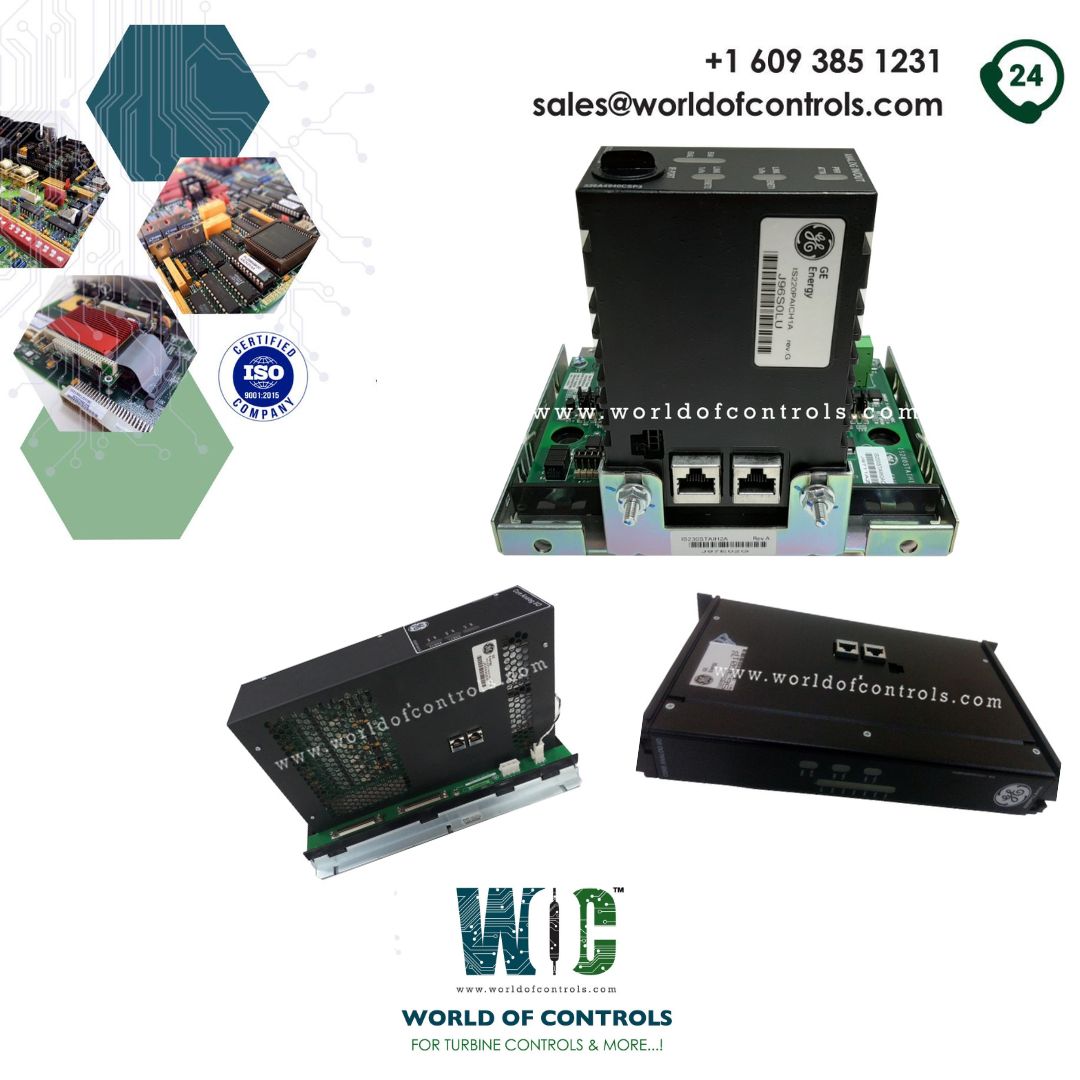Features of GE Speedtronic Mark VIe I/O cards
- GE Speedtronic Mark VIe I/O modules comprise three fundamental components: the terminal board, the terminal block, and the I/O pack.
- The terminal board is affixed to the cabinet and is available in two primary variations: S and T. The S-type board offers a single set of screws for each I/O point, permitting a single I/O pack to condition and digitize the signal. It is employed for simplex, dual, and dedicated triple modular redundant (TMR) inputs, utilizing one, two, or three boards as needed.
- On the other hand, the T-type TMR board typically distributes the inputs to three distinct I/O packs. Generally, the hardware of the T-type board performs the voting process for the outputs from these three I/O packs.
GE Speedtronic Mark VIe I/O module Components and Functions
- In the Mark VIe control system, the I/O packs play a critical role in managing and processing data from connected devices. These packs consist of two primary components: a generic processor board and a device-specific data acquisition board. Here, we delve into the essential components and functions of these I/O packs.
Digitizing Signals and Executing Algorithms
- The I/O packs are mounted on individual terminal boards. Their core function involves digitizing incoming signals, performing specific algorithms, and facilitating seamless communication with the central control unit.
Fault Detection Mechanisms
- Ensuring the reliability and safety of the control system is paramount. To achieve this, the I/O packs incorporate sophisticated fault detection mechanisms. This includes specialized circuitry within the data acquisition board and fault-detection software running on the Central Processing Unit (CPU) board. Discover how these mechanisms detect and report anomalies within the system.
Dual Network Interfaces for Redundancy
- Robust communication is essential in control systems. The I/O packs are designed to operate on dual network interfaces, allowing them to transmit inputs and receive outputs through both interfaces when connected. Learn how this redundancy enhances the reliability of data exchange within the system.
Identification and Tracking
- Maintaining an organized and well-documented system is crucial for maintenance and troubleshooting. Each I/O pack is equipped to transmit identification information to the main controller when requested. This information includes critical details like hardware catalog numbers, firmware versions, and more. Explore how this feature aids in system identification and tracking.
Temperature Sensing and Alarm Generation
- Temperature monitoring is vital for system health. The I/O packs feature temperature sensors with a high degree of accuracy. These sensors provide temperature data, accurate to within 36oF, which is accessible in the GE Speedtronic Mark VIe I/O cards system's database. Discover how this temperature data is used to generate alarms, ensuring timely detection and resolution of overheating or temperature-related issues.
WOC is happy to assist you with any of your GE Speedtronic Mark VIe I/O module. Please contact WOC by phone or email for pricing and availability on any parts and repairs.
Frequently Asked Questions
What are the primary components of GE Speedtronic Mark VIe I/O Module?
The Mark VIe I/O modules consist of three fundamental parts: the terminal board, the terminal block, and the I/O pack.
How is the terminal board mounted, and what are the two basic types of terminal boards available?
The terminal board is typically mounted to the cabinet. There are two basic types of terminal boards: S and T.
What distinguishes the S-type terminal board from the T-type terminal board?
The S-type terminal board provides a single set of screws for each I/O point and allows a single I/O pack to condition and digitize the signal.
In what scenarios is the S-type board used, and how many of them can be utilized for specific inputs?
The S-type board is employed for simplex, dual, and dedicated triple modular redundant (TMR) inputs. It can be used in configurations of one, two, or three boards, depending on the redundancy requirement.
